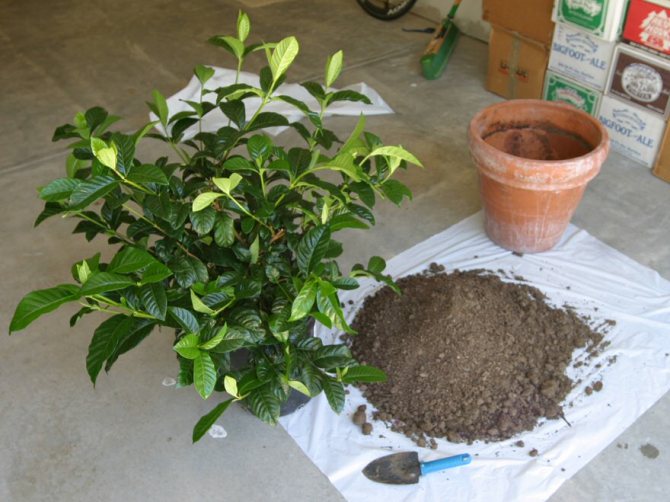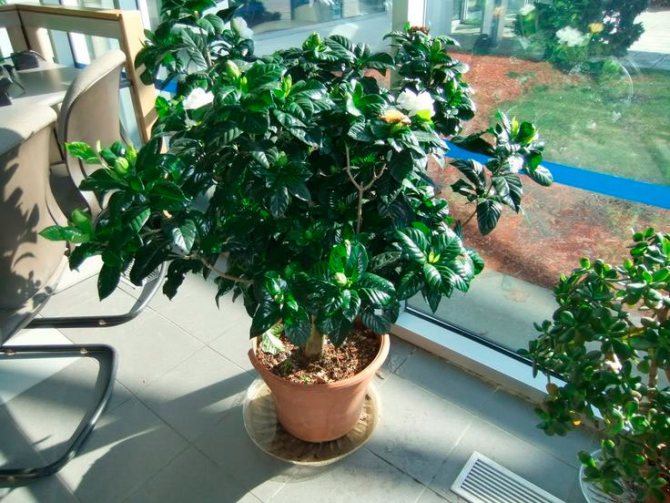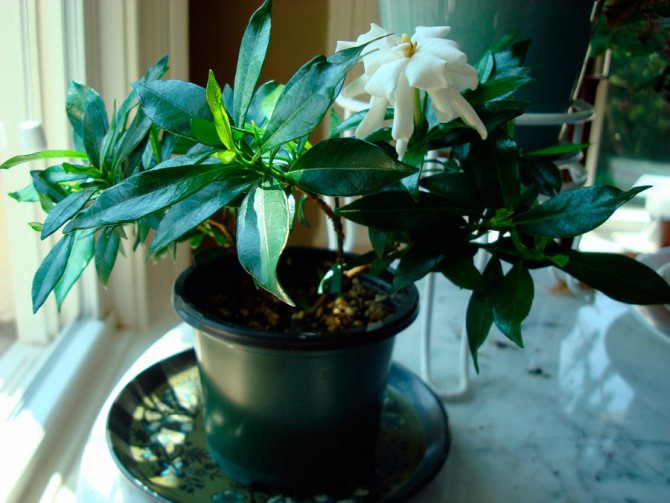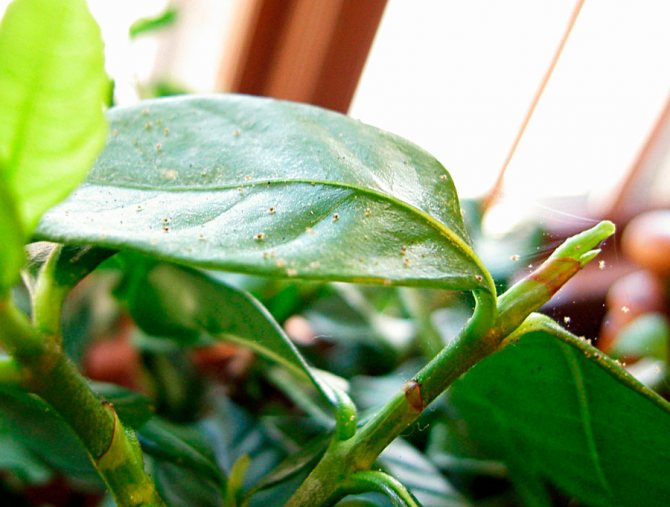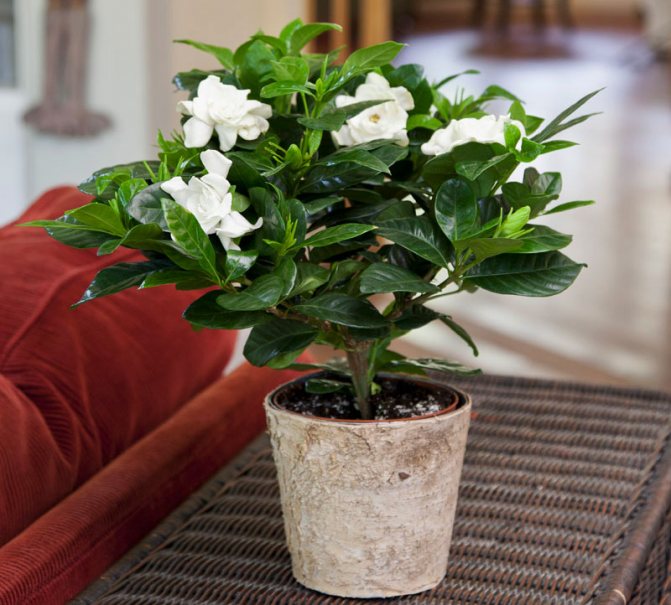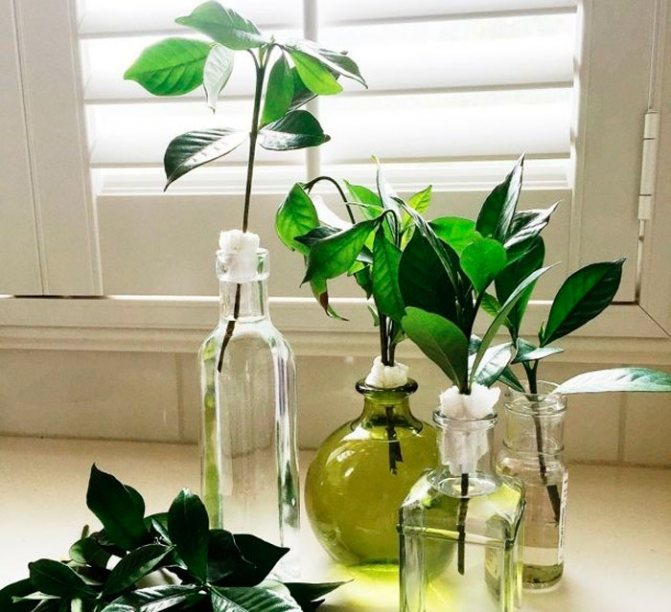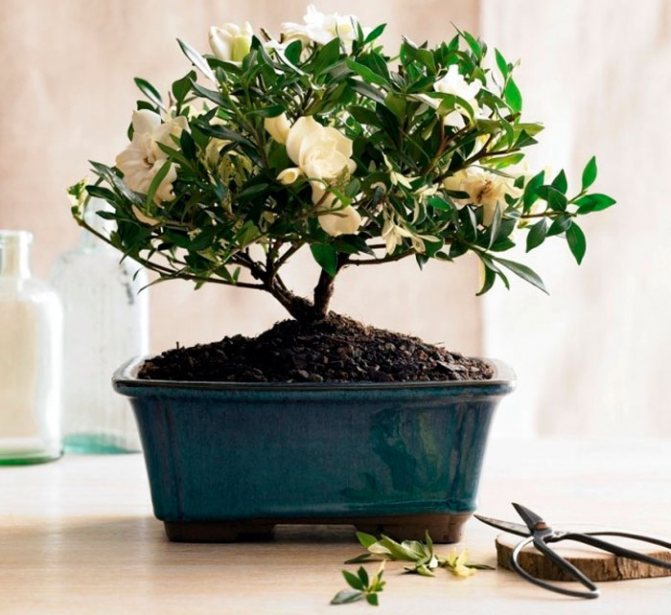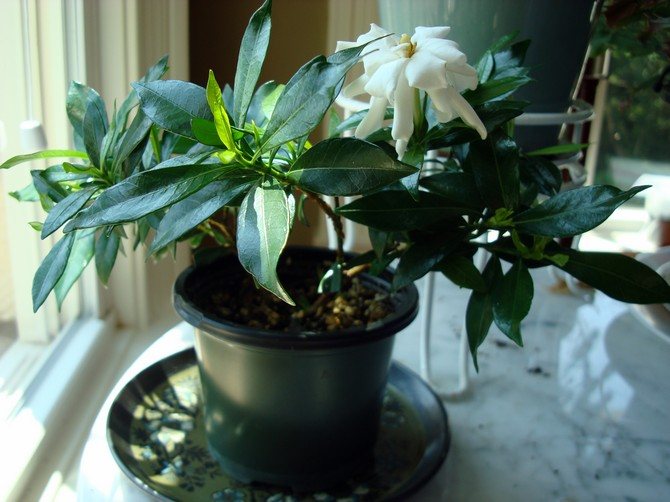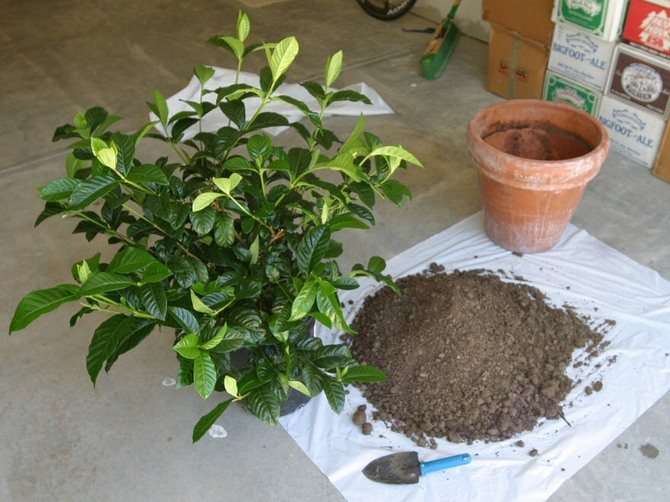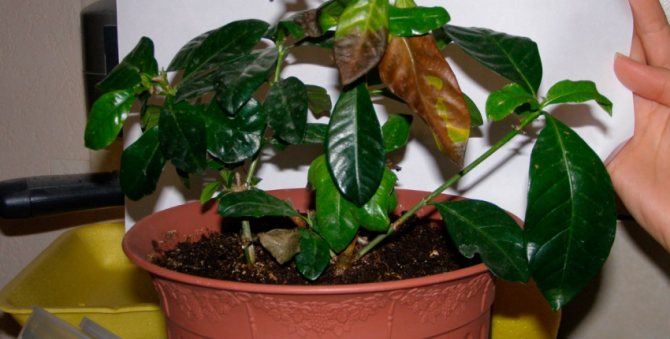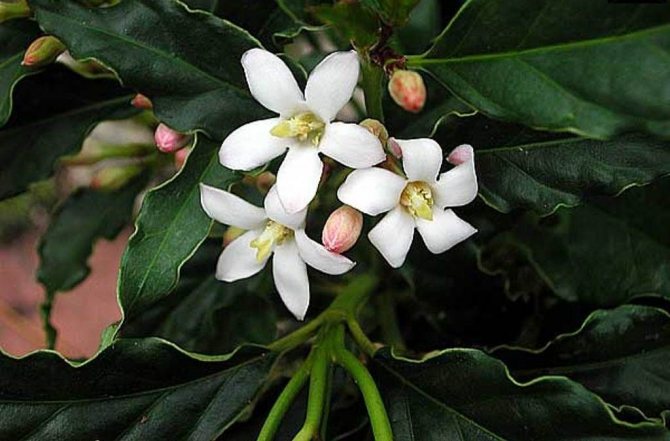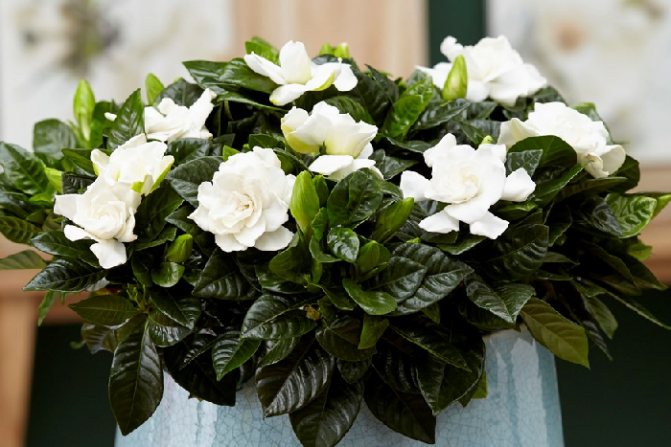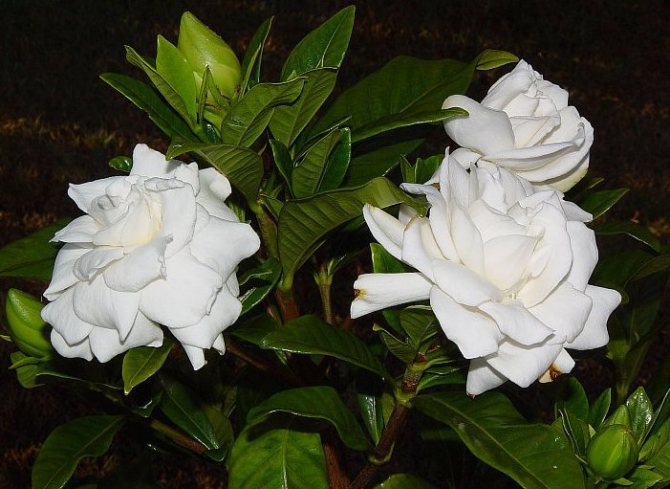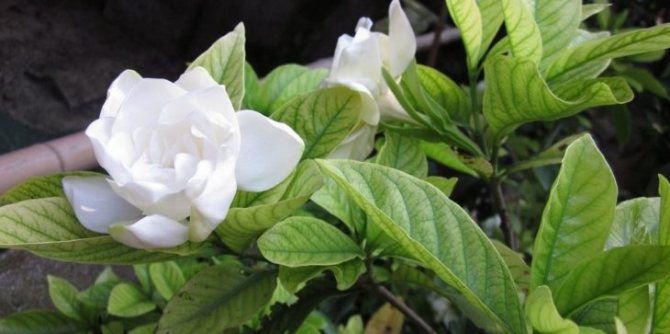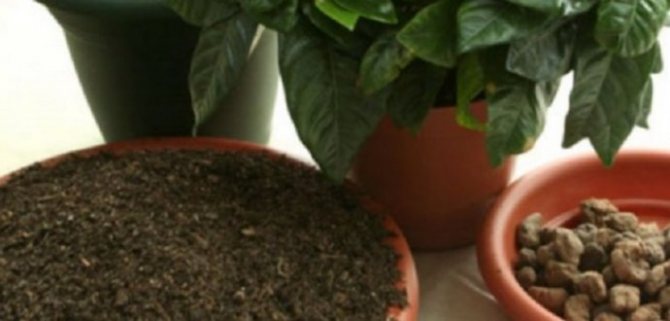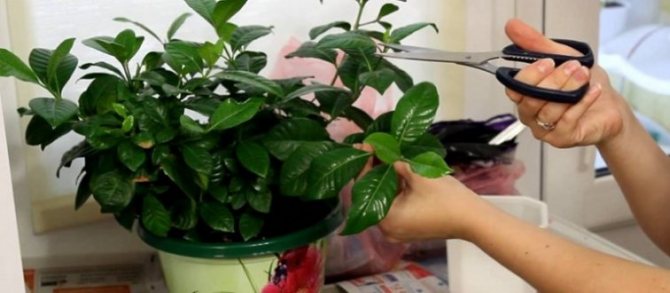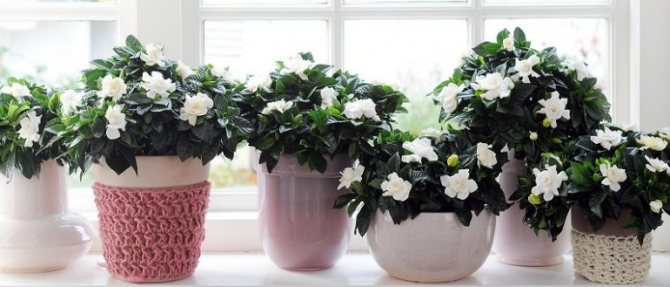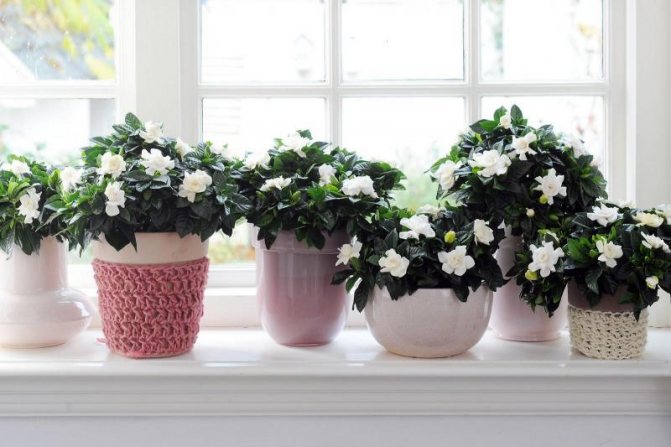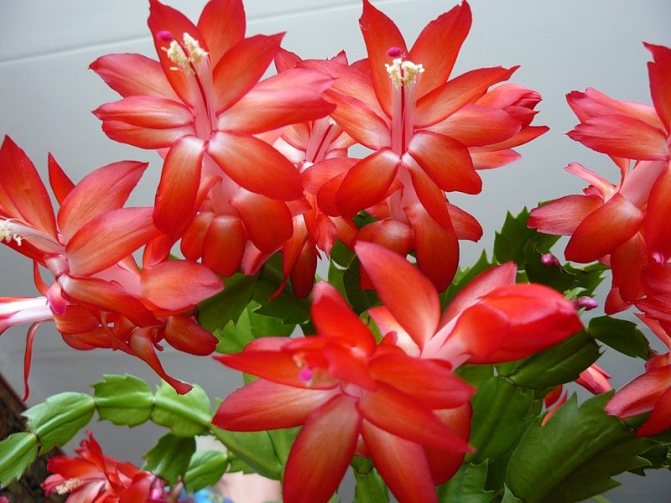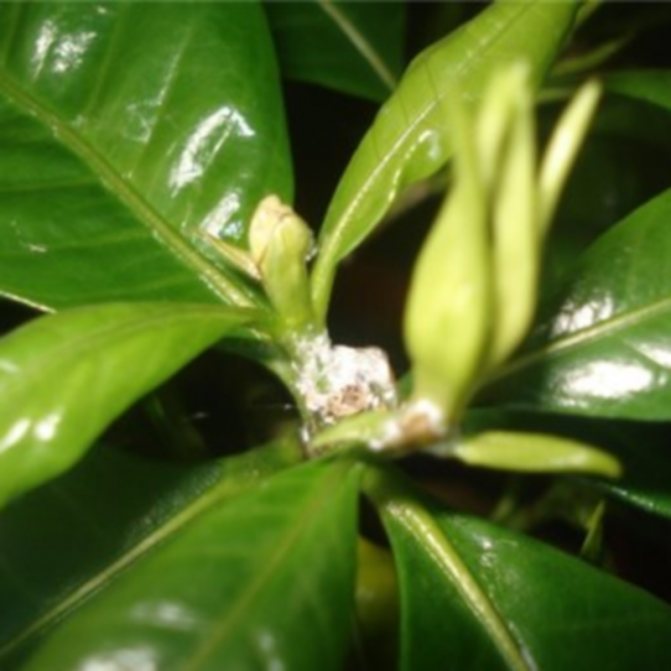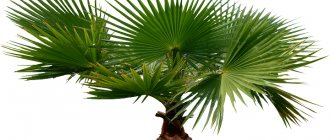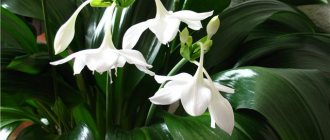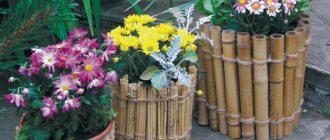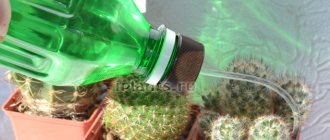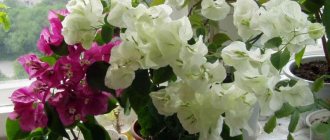
Gardenia is a very beautiful flower with a pleasant scent, reminiscent of a rose. It is believed that her homeland is the southern place of the African continent, India and China. There are about 250 varieties of gardenia, but only jasmine gardenia is used for growing at home. Under natural conditions, it can reach a height of two meters, and grown indoors - no more than 50 cm.
Taking care of your gardenia at home is a rather troublesome process. If you do not follow the basic rules of its cultivation, then the plant can shed its buds, wither, and the leaves turn yellow and fall off. However, it is appreciated for its long flowering period and beautiful decorative appearance.
In addition to the fact that it decorates the room, it also gives a special freshness and aroma. Landscape designers in countries with tropical climates often use it to decorate the local area.
Temperature regime and required air humidity
Caring for jasmine gardenia at home also involves maintaining a certain temperature. In winter, the best temperature for growing gardenia is 16-18 ° C, and in summer 22 ° -24 ° C. Care must be taken that the soil in the pot is not colder than the indoor air.
If the flower is on the windowsill, then it is necessary to protect it from drafts and make sure that the cold of the window sill does not affect the ground. To do this, put, for example, a layer of foam, hang the pot or set it on a small stand.
Growing gardenias should be done in rooms with humid air. This is especially true during the period when it releases buds. gardenia jasmine. As a home care, it is recommended to install a pot with a plant on expanded clay, moistened with water. At the same time, make sure that the water does not reach the level of the pot.
Before gardenia blooms, it should be sprayed. But if moisture gets on the blossoming buds, this can lead to darkening of the flowers. Therefore, at the time of flowering, it is recommended only to wipe the leaves with a damp cloth. This will make it possible to get quality seeds.
Types and varieties of Gardenia Jasmine
There are several dozen varieties of gardenia jasmine. Below are the species that have gained the most popularity among flower growers:
- Radican Variegata - this variety belongs to the category of dwarf; ideal for creating bonsai.
- Beauty (August Beauty) - flowers are very large, double; it is distinguished by abundant flowering.
- Chuck Hayes - flower-shaped like a bush rose; blooms with fragrant semi-double flowers. Suitable for growing in the garden.
- Fortune - flowers are very large, white-cream; When watered, Fortune leaves may emit a slight black pepper scent.
- Tahitian - flowers are not double, white; the shape of the petals resembles a propeller.
- Kula is another variety with propeller flowers, but not white, but golden.
- Veitchii - large, fragrant, white flowers. It is highly appreciated by flower growers for long flowering in winter (December inclusive).
- Fortuniana (Gardenia jasminoides var.Fortuniana) - the plant has large camellian flowers with a double flower diameter up to 10 cm.
- Four Seasons - as the name suggests, this gardenia variety can bloom in double flowers all year round.
- White Gem - compact bush; the flower is shaped like a five-pointed star.


Irrigation mode
Planting and caring for the plant is accompanied by watering. To prevent yellowing of the leaves, use room temperature water. Water this houseplant with settled tap water. It is beneficial to water the gardenia frequently and regularly so that the soil in the pot does not dry out.
Spraying with a spray can harm your gardenia. Water, falling on a blossoming flower, can lead to its darkening.
Gardenia jasmine loves slightly acidified soil. About once every 30 days, you can pour it with water, to which a few drops of citric acid or lemon juice have been added. This is especially necessary if hard water is used for irrigation. This allows the gardenia to absorb nutrients from the soil more efficiently. In the autumn-winter time, its watering is reduced, but the soil must not be allowed to dry out.
How to take care of it properly?
If a gardenia appears on the home windowsill, care should be constant and attentive. The plant is quite demanding on growing conditions. At the slightest change in the environment or content parameters, it reacts sharply.
After the purchase
A newly acquired gardenia is not worth worrying about. She needs time to recover from the stress associated with transportation, change of location.
The adaptation period usually lasts 2-3 weeks, no more. Perhaps a flowering plant was bought in the store, then it is important to let the gardenia bloom. However, everything does not always go smoothly. It often happens that upon arrival home, the gardenia sheds its buds.
Thus, she reacts to a change of residence, transportation, moving. After 3 weeks or at the end of flowering, the exotic beauty should be transplanted. The transplant is connected with the fact that the soil in which it was sold has almost no nutrients.
IMPORTANT! Without changing the soil, the flower will soon wither and turn yellow due to lack of nutrients.
Lighting


Gardenia certainly prefers light, so it would be nice to put it in a bright place. But upon contact with the scorching rays of the sun, burns occur on the leaves.
On hot days, the bright sun should be shaded. The best option would be window sills on the west or east side.
In the cold season, a southern window is suitable. Gardenia does not accept movement, especially during the budding period. This is fraught with the release of buds.
Temperature
Indoor gardenia is a heat-loving plant that does not tolerate cold weather and drafts. Comfortable air parameters in the room in summer: + 22-24 ° С, in winter: + 18-20 ° С. These parameters are especially important during the flowering period. The room temperature should be the same as the soil temperature. Therefore, you should not place the flowerpot on stone windowsills or near heating appliances.
Humidity
This exotic beauty comes from a tropical climate where it is hot and humid. Exactly moisture, plays a key role for the plant. Without this parameter, it is pointless to hope for lush flowering, because it is the presence of moisture in the air that contributes to the formation and development of flower ovaries. Even being in the budding stage, it will easily shed future flowers or be deformed in dry indoor air. Find out what to do if your exotic pet does not bloom here.
REFERENCE! It is recommended to spray the foliage daily with warm water. In the summer season 3-4 times a day, in the autumn-winter period 1 time is enough.
To increase the humidity in the room you need:
- put a pallet with wet sand or expanded clay;
- place an aquarium or fountain nearby;
- use a household humidifier;
- spray water from a spray bottle.
Watering
The jasmine gardenia has a wayward character when it comes to watering. The water balance changes depending on the season and the life cycle of the plant. Compliance with this condition makes the indoor exotic a capricious and demanding flower.


The soil in the flowerpot should be slightly damp, but not wet.- It is necessary to moisten the soil in the summer 1-2 times a week, to monitor the condition of the soil. When the top layer is dry, the soil should be watered.
- Do not allow the soil in the pot to dry out completely.
- In winter, it is enough to moisturize once every 7-10 days.
- When watering, you need to add lemon juice to the water, thus acidifying the soil. Add 4-5 drops of juice to 1 liter of water. Citric acid can be used instead of juice.
- Copper sulfate 0.5 g per 1 liter can also be added to acidified water to prevent iron deficiency.
- After moistening, after 15 minutes, drain the water from the tray, which is placed under the flowerpot.
- During the flowering period, the gardenia needs more liquid.
- Use only soft filtered water for irrigation, without impurities and salts.
- The liquid temperature should be 30-40 ° C.
The soil
Gardenia prefers acidic soil, and does not tolerate lime at all. The optimal composition of the soil mixture should be as close as possible to the natural habitat.
If the soil does not suit her, the indoor exotic will grow poorly, the flowering period will be postponed indefinitely, and if it blooms, then the inflorescences will be small and inconspicuous. Even careful maintenance will not be able to compensate for an unsuitable soil composition. The ideal gardenia soil should have the following characteristics:
- looseness;
- ease;
- environmental friendliness;
- air and water permeability;
- rich in minerals;
- well drained.
Among the ready-made soil mixes, the following are best suited:
- soil for azaleas;
- universal soil mixture for flowering plants.
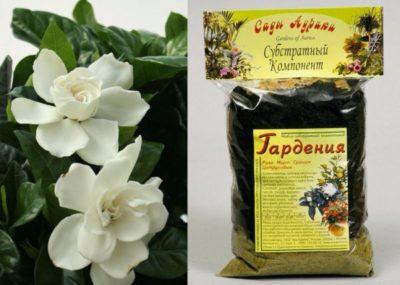

For self-preparation, you will need the following components:
- deciduous land;
- sod soil;
- coniferous land;
- peat;
- coarse sand.
These main components are taken in equal parts. To improve the quality of the earthen mixture, add perlite or vermiculite.
Fertilizers
You need to feed the indoor gardenia continuously from March to the end of August. At the beginning of spring, active growth begins, the flower needs additional nutrition, and in the autumn-winter period, fertilizers can not be used.
- Fertilize the flower 2 times a month.
- Make the concentration 2 times weaker than indicated in the instructions, in order not to overfeed the plant.
- Liquid complex fertilizers for flowering are used as nutrients.
- The composition should not include a mineral - calcium. The indoor beauty reacts quite sharply to the presence of this substance, slows down growth, does not bloom.
You can read about how to choose the right soil, fertilizer and gardenia pot in this article.
Soil fertilization rules


In autumn and winter, the plant does not require regular fertilizing, since at this time it is dormant. During the winter months, gardenia jasmine as home care can be lightly fed with iron chelate (0.5 g per 1 liter of water) or magnesium sulfate (0.5 tsp per 1 liter of water).
In spring, during the period of growth activation, it is recommended to fertilize every 15 days. But after transplanting the plant, fertilizers are applied only after 1-2 months. Since fresh soil contains a variety of nutrients needed by a gardenia.
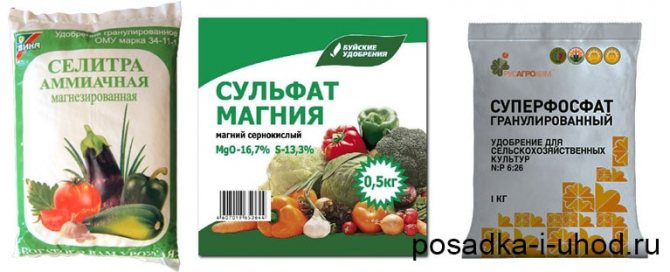

You can use liquid fertilizers for indoor plants: potassium humate, ammonium nitrate, superphosphate.Only the dose of their introduction is better to be halved than provided by the instructions. In the summer, organic fertilizers are additionally introduced, alternating with mineral fertilizers.
Gardenia care mistakes and common problems
Why gardenia doesn't bloom


Why gardenia does not bloom what to do
The flower is quite picky about the conditions of detention. In order for the beautiful gardenia to bloom, you need to maintain a maintenance regime for the seasons. A dormant period is required in cold weather with a decrease in air temperature to 16-18 ° C and moderate watering. In spring, the air temperature is slowly raised and kept moderate, no more than 24 ° C.
Gardenia may not bloom due to the wrong composition of the soil, or rather its acid-base reaction. We need a soil with a slightly acidic reaction. Remember: frequent watering makes the ground alkaline. The appearance of excess salt can be judged by the presence of white deposits on the lumps of earth and the sides of the pot. The solution to the problem is an urgent transplant of a flower into the ground for gardenias or azaleas and alternating watering with acidified water and a simple one.
Good lighting is also important, without which the plant will not release flower buds.
The gardenia will not bloom if it is cardinally pruned in winter or spring and the flower buds are cut. Prune the bush immediately after flowering so that the plant has time to lay flower buds for the next season.
Gardenia leaves fall
The problem arises under two circumstances: insufficient watering and getting into a draft. In both cases, the plant experiences stress, which results in a defensive reaction - shedding of leaves.
Keep your gardenia cool by keeping the plant out of the cold air from a window or open door.
Gardenia leaves turn yellow and black, and then fall off
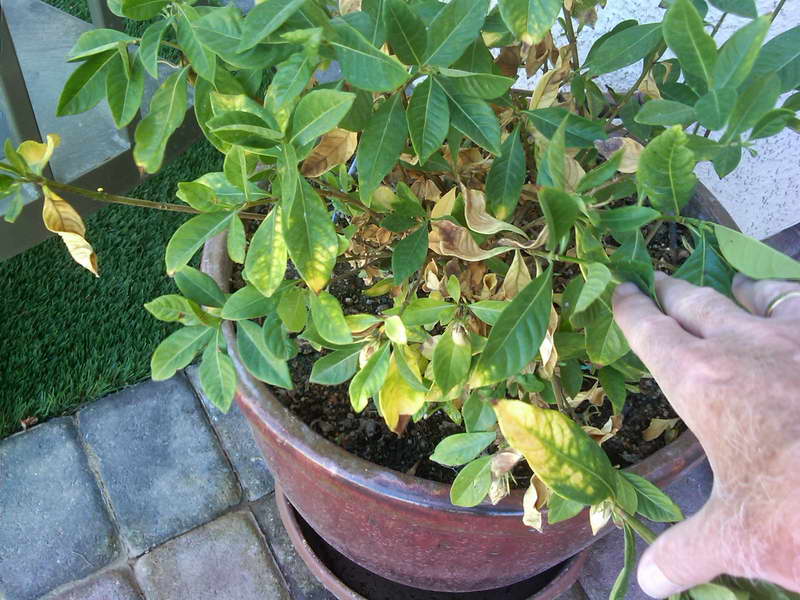

Why gardenia leaves turn yellow and blacken and fall off photo
The gardenia leaves begin to turn yellow and blacken massively as a result of constant overflow: the plant becomes ill with root rot, unable to cope with the attacking putrefactive bacteria.
- To help the beauty, you will need to replace the soil and disinfect the pot.
- Be sure to cut off diseased branches, carefully examine the roots and remove damaged areas.
- After transplanting, treat the plant with the biofungicide phytosporin according to the instructions or with chemical fungicides (Recommended fungicides include myclobutanil, thiophanate methyl, chlorothalonil, propiconazole, triforin).
- Keep the soil moist by watering regularly in small portions.
- Avoid waterlogging and stagnant water in the sump!
Gardenia leaves turn black but do not fall off
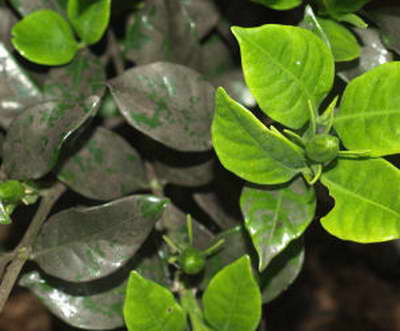

Why gardenia leaves turn black photo Sooty fungus
Another reason for blackening of the leaves is the spread of soot fungus on the surface of the leaf. Here the problem arises due to the defeat of the plant by sucking pests. Help - treatment with insecticides 4-5 times at intervals of 5 days, wiping the leaves with soapy water to wash off the soot deposit.
Gardenia leaves turn yellow
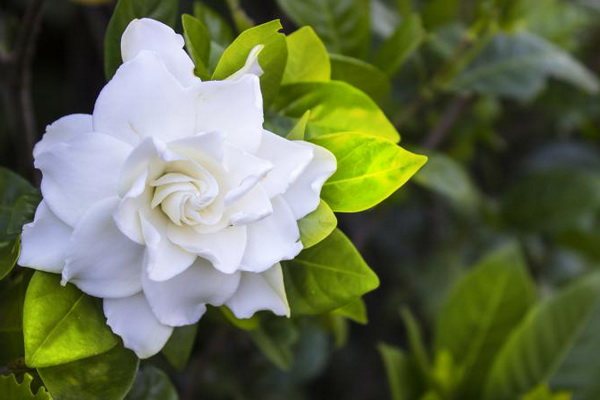

Gardenia leaves turn yellow what to do
The pallor and unhealthy yellowness of the leaves indicates the appearance of chlorosis. It is a physical illness that indicates a lack of iron. Poor assimilation of the element is facilitated by alkalization of the soil (we have already talked about this, we use soil for azalea or gardenia and water it with acidified water).
- To prevent the gardenia from turning yellow, regular feeding with iron-containing preparations (Micro-Fe or Ferovit) is carried out.
- Experienced flower growers advise, immediately after planting, to "drive" into the ground a few nails, which, rusting, will replenish the lack of iron in the soil.
- The second essential element for gardenia is magnesium. Without it, gardenia leaves turn yellow too. Magnesium sulfate will help to fill the lack of a trace element. Foliar dressing is carried out with a solution in a concentration of 2 g. per liter of water every 1-2 weeks
Correct gardenia transplant
Young plants require an annual transplant, and subsequently no more than once every 2-4 years. When transplanting, part of the root system is cut off.
If the flower has been moved to another place, then it should be transplanted only after one to two months. It is believed that this time is sufficient for the plant to “cope with stress”.
Transplanting a gardenia takes place by removing the plant from the pot, freeing the roots from the substrate and then placing it in a larger pot with fresh soil.
Slightly acidified soil rich in nutrients is used. You can use soil designed for planting azaleas. If you prepare the soil for transplanting yourself, then mix sand in equal proportions with peat, turf and coniferous soil. Sand can be replaced with vermiculite or perlite.
Sometimes sphagnum is added to the pot, which slightly acidifies the soil. To prevent alkalinization of the soil, when watering, you can add a couple of drops of citric acid to the water.
In order to give the gardenia an aesthetically pleasing appearance, it is periodically pruned. It is carried out at the end of flowering. During the first year after purchasing a flower, it should not be subjected to this procedure.
Protection from pests and diseases
The most common manifestation of neglect is yellowing of the foliage. Green streaks may be noted. The reasons are too dry air, poor watering, temperature drops and drafts.
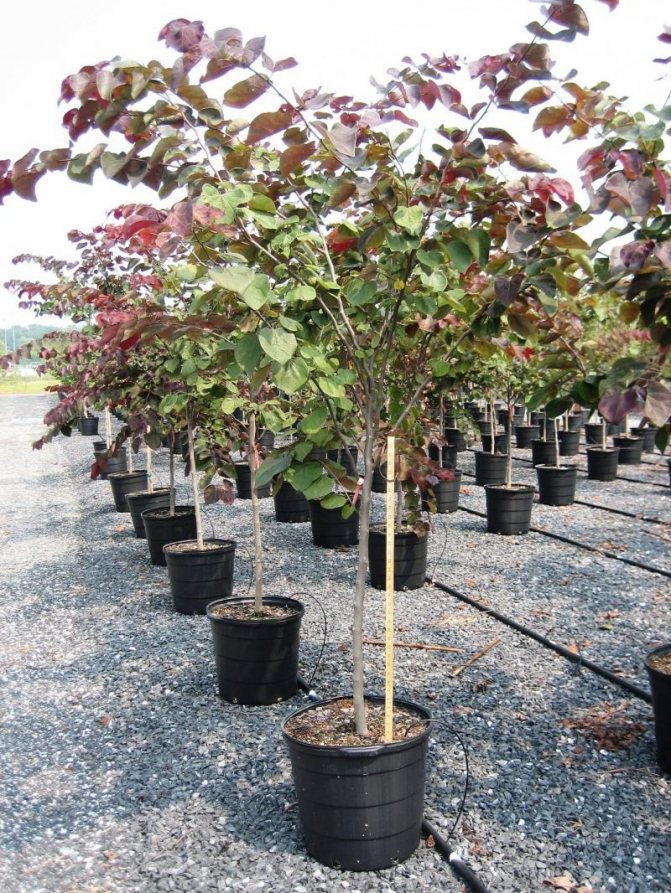

If the crown has changed color to brown, this indicates a lack of copper. A complex of vitamins will help to normalize the situation. The plant sheds buds due to a lack of moisture, which is also easy to fix.
The flower is often attacked by ticks, thrips and other pests.... Various chemicals sold in specialized stores will help in the fight against them.
Steam treatment is helpful. Put the pot in the bathroom, having filled the bathtub with hot water in advance. The vapor will provide subtropical moisture, which is ideal for a southern plant.
Each plant loves to be taken care of and taken care of. Having learned the key rules for growing gardenia, you can enjoy the beauty of flowers on your windowsill for a long time.
Reproduction methods
Gardenia's ability to throw flowers decreases over the years. To grow a new gardenia jasmine plant, seeds or cuttings are used.
Propagation by cuttings


Cuttings are planted in autumn or spring. The process consists in cutting off shoots, which are approximately 10 cm long, and placing them in a soil consisting of an equal amount of peat and sand. It is better if the stalk has a kind of "heel", that is, a piece of an older branch.
Before planting, it is recommended to place the cuttings in a slightly pink solution of potassium permanganate and treat with a growth stimulant, for example, Kornevin. To create a greenhouse effect, the stalk planted in the ground is covered with a plastic bottle, glass jar or plastic bag. This protects the plant from cold air and drafts.
To speed up the rooting process, special growth stimulants are used. After the root system appears on the cutting, it is transplanted into soil consisting of peat, sand and coniferous soil.
Seed propagation
For propagation of seeds, high-quality, fresh ones are selected. Seed planting should be carried out in the spring. They are placed in soil and covered with earth. Then the soil in which the seeds are planted is thoroughly moistened.
The seed pot must be kept in a room with a temperature of 23 ° -25 ° C. Be sure to ensure that the soil does not dry out. If growing conditions are observed, seeds germinate quickly. Gardenia from seeds will bloom 2-3 months later than planted by cuttings.
Description of the plant
Gardenia is a genus of tropical shrubs of the Madder family. It was named after the British naturalist and physician Alexander Garden. In the wild, it grows only in South Africa and in the southeastern regions of Asia. For growing in an apartment, the only type is used - jasmine gardenia. Distinctive features:
- the plant is represented by an evergreen shrub up to 60 cm high;
- the stem is woody, very branched;
- shoots are strong, in adulthood they are painted in a brown shade;
- dark green leaves are arranged in opposite order, there is a characteristic gloss on the surface;
- flowering is possible from the second half of summer to October, very abundant;
- semi-double petals, white or yellow, formed into single inflorescences;
- the fruit does not develop in room conditions.
Gardenia is considered a difficult indoor flower to grow. To achieve flowering, you need to make a lot of effort, carefully follow the rules of care and avoid sudden changes in the microclimate.
Diseases and problem moments
When growing gardenia jasmine, the following problems may arise:
- The leaves have withered. This is due to non-compliance with the irrigation regime. Leaves wither both due to excessive watering and due to lack of moisture.
- The leaves turned yellow. This indicates an insufficient amount of nutrients in the soil.
- Intense foliage loss. This often happens when the room humidity is low. In some cases, this happens if the plant is infected with a spider mite.
- Falling off of unopened buds. It happens if the watering is too intense or too poor. This effect sometimes happens if the plant is rearranged to another room, or after transportation to another place.
- The leaves turned black and fell. The result of damage to the root system of the flower. This is possible with abundant watering. To eliminate this problem, an urgent transplant into fresh soil is required.
- Insufficient lighting can lead to depletion of the flower. In winter, gardenia jasmine requires additional lighting.
When gardenia is damaged by pests: spider mites, whiteflies, thrips, scale insects or scale insects, insecticides are used: confdor extra, tanrek, calypso. The rules for their use are indicated in the instructions attached to them.
How is gardenia useful?
In medicine in many countries, gardenia is used as a medicinal plant for certain diseases:
- Gardenia fruits and root are used to reduce fever and to treat inflammation.
- The leaves of the plant are applied to fresh wounds to stop bleeding.
- Gardenia infusions and decoctions are used to treat:
- gastrointestinal tract;
- dental problems;
- inflammatory processes in the respiratory system;
- poisoning treatment;
- reduction of headaches;
- with renal diseases;
- as a sedative.
Not only in appearance, but also in the characteristics of cultivation, it differs from other indoor gardenia plants. Home care should meet the requirements as much as possible, then you can grow a beautiful and healthy flower.
See the features of growing in the video:
If you use other methods of growing, you can share them with your readers how to care for a flower by leaving your comments.
Why gardenia doesn't bloom
With improper care, it will bloom poorly, discard buds. To avoid this, the following rules should be observed:
- gardenia loves moisture, but its excess can harm and lead to the fact that the plant will rarely bloom;
- sudden changes in temperature adversely affect the condition of the gardenia; drafts should not be allowed;
- flowering can be stimulated with fertilizers rich in phosphorus and potassium.
If in winter the plant was kept in conditions of high air temperature, then by spring it may not bloom.In winter, it requires special care.


High humidity in winter can cause non-flowering
Diseases
With insufficient attention, the flower can infect various diseases. Under the influence of disease starts shedding leaves and buds, its foliage turns black or yellow. Problems appear for various reasons:
- leaves wither - due to insufficient watering, or, on the contrary, an excess of liquid;
- leaves turn yellow due to lack of nutrients;
- sheds leaves - dry air, damaged roots or a spider mite wound up on the plant;
- blackening of the leaves occurs due to excessive dryness of the soil, in this case, fertilizers that include iron will be required;
- buds fall off - insufficient or excessive watering, violation of the temperature regime.
To grow a full-fledged plant, you need know the rules of care and strictly observe them.
If the flower buds do not open well, I water it with boiled water passed through a filter. Perhaps the gardenia lacks light or the air humidity is high. To speed up the flowering process, you need to find and fix the problem.



